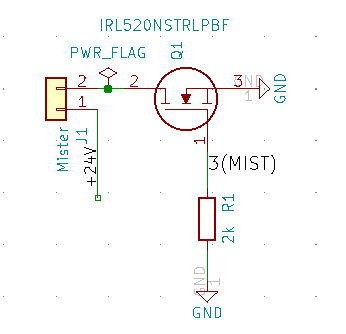The quick answer is, not directly. You can draw a limited amount of power from an Arduino board, but it has limits: it’s meant to control the logic of a circuit, not distribute huge amount of power by itself.
There are two ways to you use to get 12V of power from the board:
- If you’re powering your board from a 12V power supply you could get this 12V directly from the Vin pin. In that cas, it’s not really from the Arduino itself in that case so you can’t control it. It’s also unregulated, so no guarantee of a perfect 12V depending on your power source.For most Arduino boards like the Arduino Uno, the maximum supply voltage is 12V so you won’t be able to get 24V for example.
- You can also convert the 5V from the Arduino board to 12V power with a DC/DC converter. Of course, if you ramp up the power, you’ll have less current available, and the Arduino board doesn’t supply a lot to start with.
On the other hand, you can also use the Arduino to control a larger power source of any size, which is closer to its intended use case. There are two main type of components that can act as a switch: a transistor, and a relay.
Relays
A relay is switch that is toggled when electricity is supplied to a coil. When you send an electrical signal using the Arduino or another device, the coil will magnetically move a tiny lever to close the relay’s internal circuit and activate it.
Depending on your application, you have two types of relay you can choose from:
- Normally open (off): the relay will let the power through when you activate it only.
- Normally closed (on) the relay will always let the power through unless you active it.
You’ll have to take a look at two values to choose a relay: the coil voltage, which is what the Arduino will send to control it, and the amount of power it can switch, which are not connected. You can for example have a relay that’s controlled by a 5V signal that will be driven by an Arduino Uno pin, but that will be able to control a 12V or 24V power source, or even AC power. There must also be enough current for the coil to activate.
Power MOSFET
A power MOSFET is a kind of transistor that can act as a switch, driving large amount of current and voltage. Unlike a relay, it does not have any moving parts, so it switches a lot faster and can switch many more times before breaking down. On the other hand, it doesn’t handle as much power or current.
All MOSFET have 3 pins: a Gate, a Source, and a Drain. When the voltage across the Gate and the Source is positive, the “switch” turns on, and when it’s negative it turns off.
The device you want to power will have its ground connected to the Drain, and the power source driving it is always connected. Here is how it looks like connected to an Arduino pin with a ILR520 MOSFET:
